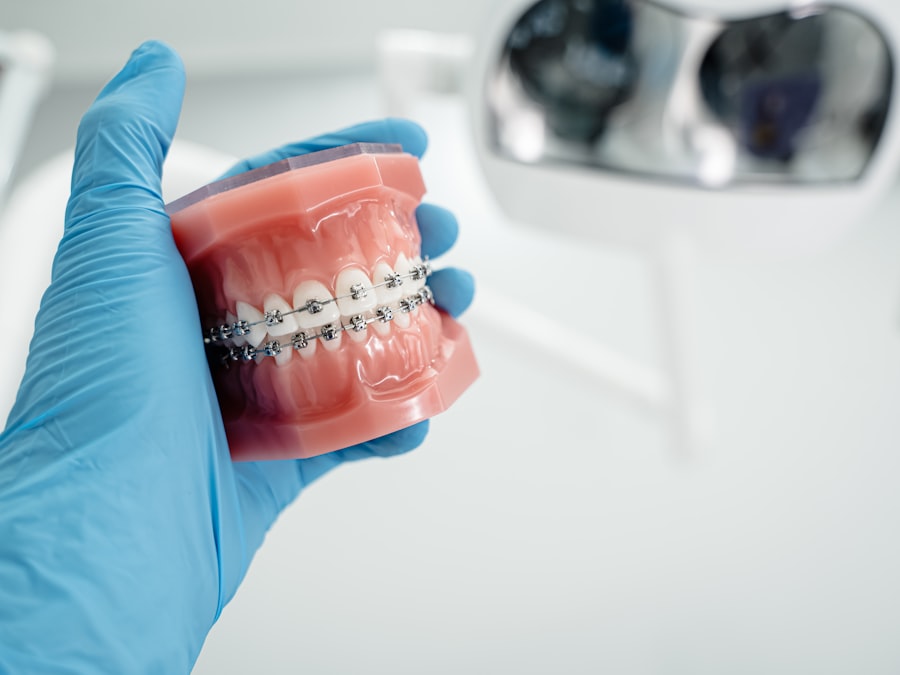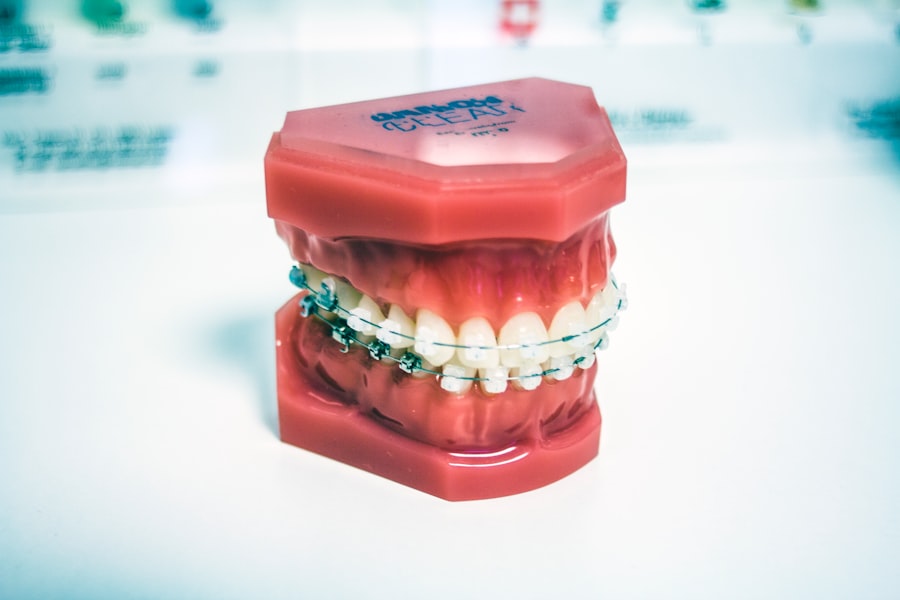The field of dentistry has undergone a remarkable transformation over the past few decades, primarily driven by technological advancements that have revolutionized both diagnostic and treatment methodologies. One of the most significant innovations is the introduction of digital imaging techniques, such as cone beam computed tomography (CBCT) and digital radiography. These technologies provide high-resolution images that allow for more accurate diagnoses and treatment planning.
For instance, CBCT offers three-dimensional views of a patient’s oral and maxillofacial structures, enabling dentists to visualize complex anatomical relationships that traditional two-dimensional X-rays cannot capture. This enhanced imaging capability not only improves the precision of procedures like implant placement but also minimizes the risk of complications. Moreover, the advent of CAD/CAM (Computer-Aided Design and Computer-Aided Manufacturing) technology has transformed restorative dentistry.
Dentists can now design and fabricate crowns, bridges, and veneers in a single visit, significantly reducing the time patients spend in the dental chair. This technology utilizes digital impressions taken with intraoral scanners, which are more comfortable for patients compared to traditional impression materials. The ability to produce restorations on-site not only enhances efficiency but also improves patient satisfaction by providing immediate results.
As these technologies continue to evolve, they promise to further enhance the quality of care delivered in dental practices.
Key Takeaways
- Dentistry is rapidly evolving with new technologies enhancing treatment precision and efficiency.
- Preventative care and minimally invasive procedures are becoming central to dental practice.
- Tele-dentistry is expanding access to dental care, especially in remote areas.
- Dental implants and cosmetic procedures are increasingly popular for aesthetic and functional improvements.
- AI and machine learning are being integrated to improve diagnostics, treatment planning, and patient outcomes.
Shift towards Preventative and Minimally Invasive Dentistry
In recent years, there has been a notable shift in dentistry towards preventative care and minimally invasive techniques. This paradigm change emphasizes the importance of maintaining oral health through regular check-ups, education, and early intervention rather than solely focusing on treating existing conditions. Preventative dentistry includes practices such as fluoride treatments, sealants, and patient education on proper oral hygiene techniques.
By prioritizing prevention, dental professionals aim to reduce the incidence of cavities and periodontal disease, ultimately leading to better long-term health outcomes for patients. Minimally invasive dentistry complements this preventative approach by utilizing techniques that preserve as much natural tooth structure as possible. For example, air abrasion technology allows dentists to remove decayed tooth material without the need for traditional drilling, which can be uncomfortable for patients.
Similarly, laser dentistry has gained popularity for its ability to treat various dental issues with precision while minimizing discomfort and recovery time. These advancements not only enhance patient comfort but also promote a more positive perception of dental visits, encouraging individuals to seek care proactively rather than reactively.
Growing Importance of Tele-dentistry

The rise of tele-dentistry has emerged as a significant trend in the dental industry, particularly accelerated by the COVID-19 pandemic. Tele-dentistry allows dental professionals to provide consultations and follow-up care remotely, utilizing video conferencing and digital communication tools. This approach has proven invaluable in expanding access to dental care, especially for individuals in rural or underserved areas where dental services may be limited.
Patients can receive timely advice on oral health issues without the need for an in-person visit, which can be particularly beneficial for those with mobility challenges or those who are hesitant to visit a dental office due to health concerns. Furthermore, tele-dentistry facilitates better patient engagement and education. Dentists can share educational resources, demonstrate proper oral hygiene techniques, and discuss treatment options with patients in real-time.
This interactive approach not only empowers patients to take charge of their oral health but also fosters a stronger dentist-patient relationship. As technology continues to advance, tele-dentistry is likely to become an integral part of comprehensive dental care, offering convenience and flexibility while maintaining high standards of patient care.
Rise of Dental Implants and Cosmetic Dentistry
| Year | Number of Dental Implants Placed (Millions) | Cosmetic Dentistry Procedures Performed (Millions) | Market Growth Rate (%) | Patient Satisfaction Rate (%) |
|---|---|---|---|---|
| 2015 | 1.2 | 4.5 | 8.5 | 85 |
| 2016 | 1.5 | 5.0 | 9.0 | 87 |
| 2017 | 1.8 | 5.8 | 10.2 | 88 |
| 2018 | 2.2 | 6.5 | 11.5 | 90 |
| 2019 | 2.7 | 7.3 | 12.0 | 91 |
| 2020 | 3.0 | 7.8 | 11.8 | 92 |
| 2021 | 3.5 | 8.4 | 12.5 | 93 |
| 2022 | 4.0 | 9.0 | 13.0 | 94 |
The demand for dental implants has surged in recent years, driven by advancements in implant technology and an increasing awareness of the importance of oral aesthetics. Dental implants provide a permanent solution for tooth loss, offering a functional and aesthetically pleasing alternative to traditional dentures or bridges. The procedure involves surgically placing titanium posts into the jawbone, which serve as artificial tooth roots.
Over time, these implants fuse with the bone through a process called osseointegration, creating a stable foundation for replacement teeth. The success rates of dental implants have improved significantly due to better materials and techniques, making them a preferred choice for many patients seeking restorative solutions. Cosmetic dentistry has also gained prominence as individuals increasingly prioritize their smiles as a reflection of their overall appearance.
Procedures such as teeth whitening, veneers, and orthodontics have become more accessible and popular among patients seeking aesthetic enhancements. The rise of social media platforms has further fueled this trend, as individuals are more conscious of their appearance in photographs and online interactions. Cosmetic dentistry not only addresses aesthetic concerns but also contributes to improved self-esteem and confidence.
As technology continues to evolve, new techniques such as 3D printing are being integrated into cosmetic procedures, allowing for more precise and customized treatments that cater to individual patient needs.
Integration of Artificial Intelligence and Machine Learning in Dental Practice
The integration of artificial intelligence (AI) and machine learning into dental practice is revolutionizing how dentists diagnose and treat patients. AI algorithms can analyze vast amounts of data from patient records, imaging studies, and treatment outcomes to assist dentists in making informed decisions. For instance, AI-powered diagnostic tools can identify early signs of dental diseases such as caries or periodontal disease by analyzing radiographs with remarkable accuracy.
This capability not only enhances diagnostic precision but also enables earlier intervention, ultimately improving patient outcomes. Moreover, AI is being utilized in treatment planning and personalized care. Machine learning algorithms can analyze individual patient data to predict treatment success rates based on various factors such as age, medical history, and lifestyle choices.
This information allows dentists to tailor treatment plans that align with each patient’s unique circumstances, enhancing the overall effectiveness of care. As AI technology continues to advance, its potential applications in dentistry will likely expand further, paving the way for more efficient workflows and improved patient experiences.
Focus on Patient Experience and Comfort

In today’s competitive dental landscape, enhancing patient experience has become a top priority for many practices. Dentists are increasingly recognizing that providing exceptional care goes beyond clinical expertise; it also involves creating a welcoming environment that prioritizes patient comfort and satisfaction. Many dental offices are investing in modern amenities such as comfortable seating, soothing decor, and entertainment options like televisions or music systems to help alleviate anxiety during visits.
Additionally, effective communication plays a crucial role in improving patient experience. Dentists who take the time to explain procedures clearly and address any concerns foster trust and confidence among their patients. Utilizing technology such as digital treatment plans or visual aids can further enhance understanding and engagement.
By prioritizing patient experience, dental practices not only improve retention rates but also encourage positive word-of-mouth referrals, ultimately contributing to their long-term success.
Increasing Demand for Sustainable and Eco-friendly Dental Products
As global awareness of environmental issues continues to grow, there is an increasing demand for sustainable and eco-friendly dental products within the industry. Consumers are becoming more conscious of their purchasing decisions and are seeking products that align with their values regarding sustainability. This shift has prompted manufacturers to develop biodegradable toothbrushes made from bamboo or recycled materials, as well as toothpaste tablets that reduce plastic waste associated with traditional toothpaste tubes.
Moreover, eco-friendly practices are being adopted within dental offices themselves. Many practices are implementing waste reduction strategies by minimizing single-use plastics and opting for recyclable materials wherever possible. Additionally, some dental professionals are exploring green certifications for their practices to demonstrate their commitment to sustainability.
By embracing eco-friendly initiatives, dental practices not only contribute positively to the environment but also attract environmentally conscious patients who appreciate their efforts.
Impact of COVID-19 on Dental Industry and Future Preparedness
The COVID-19 pandemic has had a profound impact on the dental industry, prompting significant changes in protocols and practices aimed at ensuring patient safety. Initially, many dental offices were forced to close or limit services due to health concerns and government regulations. As practices reopened, they implemented enhanced infection control measures such as increased PPE usage, air filtration systems, and rigorous sanitization protocols to protect both patients and staff.
Looking ahead, the lessons learned during the pandemic will likely shape the future of dental care. Practices are now more prepared for potential disruptions by adopting flexible scheduling systems that allow for rapid adjustments based on public health guidelines. Additionally, tele-dentistry has emerged as a valuable tool for maintaining continuity of care during uncertain times.
As the industry continues to adapt to evolving challenges, the focus on safety and preparedness will remain paramount in ensuring that patients receive high-quality care while minimizing risks associated with infectious diseases.


